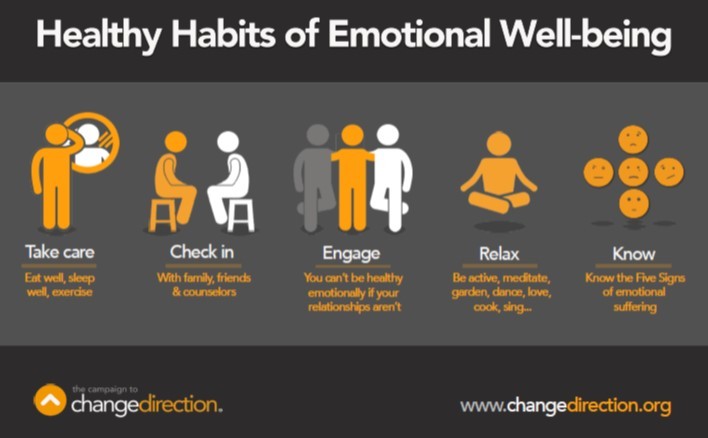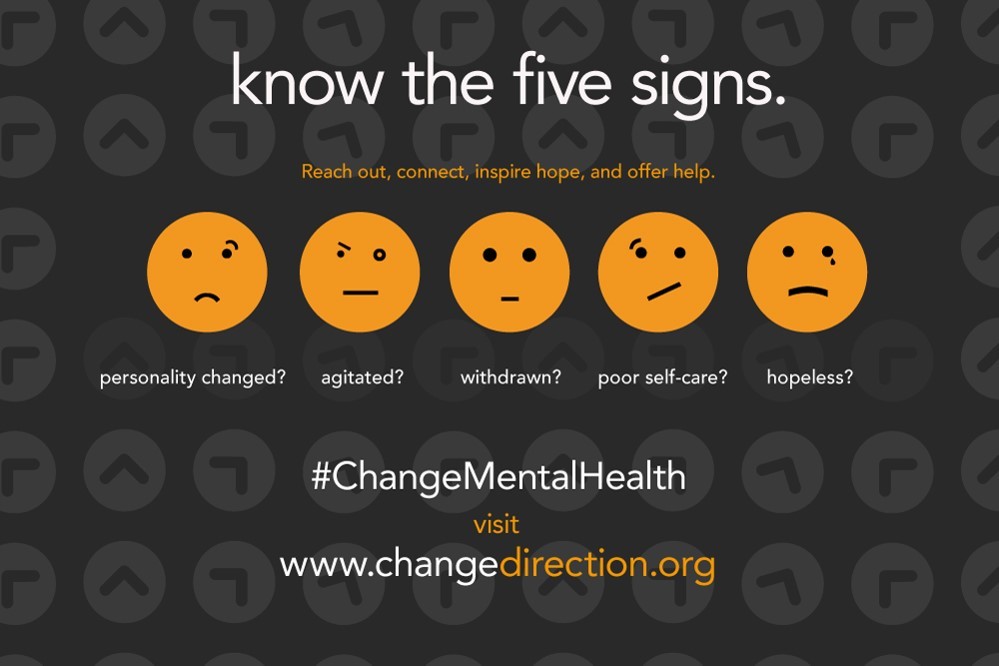As the semester heads into its final stretch, my PSY 101 course finally makes its move from the foundational science of psychology (principles of brain and behavior, cognition, perception, development, etc.) into the applied use of psychology to address mental health concerns (the stuff many students thought they’d get all along!). There’s still lots of science to understanding psychological disorders and the treatment of disorders, but there are also rich opportunities to help students better understand the mental health issues they have seen and will see in their own lives. I’m not a clinical psychologist, and few of my students will go on to be licensed mental health practitioners. But we, along with all teaching faculty, will be confronted by mental health issues – either of our own, or of those we know and love. And we all collectively shape the way those mental health issues are experienced.
So over the years I’ve explored a variety of simple ways to help students take away some practical knowledge of mental health even if they don’t remember any of the scientific perspectives covered on the final exam. One resource I’ve been using in recent semesters strikes me as potentially useful for other faculty and academic staff: the Campaign to Change Direction.
The Campaign to Change Direction was “inspired by the discussion at the White House National Conference on Mental Health in 2013, which came on the heels of the Newtown, Conn. Tragedy” and includes as founding members the American Psychological Association, the American Psychiatric Association, the National Association of Social Workers, and the American Foundation for Suicide Prevention. It’s goals are to “change the culture in America about mental health, mental illness, and wellness” through a movement that: “frees us to see our mental health as having equal value to our physical health; creates a common language that allows us to recognize the signs of emotional suffering in ourselves and others; encourages us to care for our mental well-being and the mental well-being of others.”
The implicit idea here is simple but profound: mental health is as much a collective cultural endeavor as it is an individual responsibility. And while changing our national culture around mental health is both a worthy and ambitious goal, the same idea would easily apply to our local culture at UP. By emphasizing some shared habits and a common language, faculty and academic staff can help create a culture “where those in need receive the care and support they deserve.”
The shared language the Campaign to Change Direction suggests mostly come from emphasizing five “healthy habits of emotional well-being” and the “Five Signs” of emotional suffering. These are not rocket science, but being reminded occasionally of the importance of simple things like eating well, sleeping, and getting exercise probably can’t hurt:

And, likewise, the “Five Signs” of emotional suffering should likely make some intuitive sense – but psychologists think having some shared criteria can help us to recognize when others might need help:

One practical classroom suggestion here, remembering that our job as faculty and academic staff is to connect rather than to intervene, is to take advantage of UP’s mental health syllabus statement. It’s the time of the year where it is always a good idea for students to return to the syllabus and make sure they know what points remain, what tasks need priority, and how they can finish the semester strong. Why not also return to the reminder that when students feel emotionally at risk there is help available through the Health and Counseling Center? At the very least, we have some control over the local culture around mental health, and the capacity to ‘change direction’, in our own classrooms.
